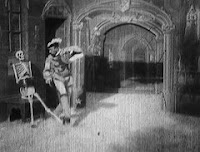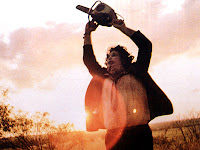 Horror films are films which are unsettling to the viewer linking closely to other genres such as fantasy, science-fiction and thriller. The genre is made to expose a viewers worse fears and nightmares creating a 'thrill' for those watching. The horror genre in film began with short movies made by filmmakers such as Georges Méliès in the late 1890s; films such as the silent three minute long Le Manoir du diable (The House of the Devil) from 1896. Some consider Le Manoir du diable the first ever horror film.
Horror films are films which are unsettling to the viewer linking closely to other genres such as fantasy, science-fiction and thriller. The genre is made to expose a viewers worse fears and nightmares creating a 'thrill' for those watching. The horror genre in film began with short movies made by filmmakers such as Georges Méliès in the late 1890s; films such as the silent three minute long Le Manoir du diable (The House of the Devil) from 1896. Some consider Le Manoir du diable the first ever horror film.
As horror progressed into the 1920s Hollywood began to make their own horror movies; classics like Dr Jekyll and Mr Hyde (1920), The Hunchback of Notre Dame (1923) and The Lost World (1925). Horror was continued using these 'monster' characters till the Vietnam war in the 1960s. Horror movies changed and expressed more gore and evolved into what it is today; such movies like The Exorcist (1973) and The Texas Chainsaw Massacre (1974) changed the image of horror after Vietnam as filmmakers pursued the imagery saw in that war.
Choosing horror as our genre allows us a variety of options to choose for our movie. Many sub-genres may be linking from horror including gore and psychological. Horror is a genre which is very recgonisable to modern day viewers therefore making it easier to depict.






